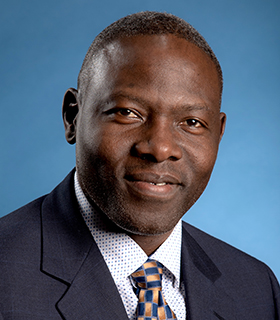
Saskatchewan’s first mental health court reduces recidivism, USask evaluation finds
A University of Saskatchewan (USask) evaluation has found that the first group of people to come through Saskatoon’s Mental Health Strategy Court were arrested less often for petty offences in the year following their participation in the program.
By Greg Basky for USask Research Profile and Impact
The report also found these participants, who have cognitive disabilities and mental disorders, were better connected with mental health services, and made fewer trips to the emergency department.
“Our assessment found an observable and demonstrable reduction in criminal activity. Instead of going through the courts, probation officers, and lawyers, many individuals who came through mental health court got connected with the mental health system—which is where they belong in the first place,” said Dr. Mansfield Mela, director of the USask Centre for Forensic Behavioural Science and Justice Studies, which conducted the evaluation.
The mental health court, held the first and third Monday of the month, aims to divert people with mental illness or Fetal Alcohol Spectrum Disorder away from the regular criminal court system by co-ordinating treatment for them in the community.
To take part in the alternative program, participants must plead guilty to their charges. Individuals may stay in the program for as long as two years, appearing before the judge and court every month or two to discuss progress they’re making in their treatment.
The Saskatoon court began in 2013 and there are now mental health courts in Regina and Moose Jaw as well. Saskatchewan also has drug courts and domestic violence courts based on the same philosophy of “therapeutic jurisprudence,” which looks at how the legal system can be used to help people.
In a qualitative study by USask nursing student Carmen Dell for her master’s thesis, one participant credited the mental health court for turning his life around.
“For me it was pretty much exactly what I needed,” the participant said. “I was homeless at the time, and having a lot of depression issues and whatnot, and the court got me connected to Housing First, and I got off the streets. And it got me hooked to a counsellor to talk through childhood situations that have been haunting me, I guess. And to a psychiatrist, and I got on medication. Like, the court literally gave me back my life.”
The evaluation by USask’s Forensic Centre was based on data from the Saskatchewan Ministry of Justice, Saskatoon Police Service, and the former Saskatoon Regional Health Authority (now the Saskatchewan Health Authority). The evaluation results are now with the mental health court’s steering committee, which includes representatives of justice and health, as well as community-based organizations.
While the 89 participants in the court’s first cohort were arrested less for misdemeanors and other offences after coming through the program, they did face more charges for court-generated, or administration of justice, offences. These charges were for failing to comply with conditions set by the judge, such as notifying the court of a change of address, or associating with individuals that participants are supposed to avoid. The cost of these compliance issues to the criminal justice system (for new charges, arrests, court cases, and convictions) was just over $1 million in the first year after participants went through the court.
Glen Luther, a USask law professor and member of the Forensic Centre’s executive committee, believes the current approach to breaches must be adapted to better reflect the realities faced by clients.
“We should recognize that falling off the wagon is a common thing,” said Luther. “The question should be: How do we react once that’s happened? It’s about being real about crime, trying to understand the real causes of crime, particularly with this population.”
One approach, said Luther, is that rather than arresting the individual, when someone breaches a condition they should go back in front of the judge who imposed the condition to discuss how to address the misstep and get treatment back on track. Amendments to the Criminal Code in 2019 included the introduction of “judicial referral hearings” which are intended to do just that, thereby reducing the number of breach charges brought forward.
Although the evaluation did not specifically look at cost savings from keeping participants out of jail, Mela said the fact that 80 per cent of participants stayed in the community represents significant savings.
“The majority of them would have gone to jail,” said Mela. “That would be days spent in jail multiplied by almost $500 per day. That is a lot of cost to the government, to the taxpayer.”
The final report recommends creating a court co-ordinator position to oversee the program, manage clients’ case files in between courts dates, ensure they make it to mental health appointments, and help to arrange other community supports such as housing or employment.
Judge Marilyn Penner, who sits in Saskatoon’s mental health court and chairs its steering committee, sees the program improving quality of life for clients.
“A lot of times, these individuals don’t have a psychiatrist or even a family doctor. They don’t have an addiction counsellor, and they don’t have the connections to overcome the challenges of their mental illness,” said Penner. “Having their mental health condition addressed, and having supports they can access, is helping them function in a healthier, more socially acceptable manner.”
The Forensic Centre conducts research in support of policing, corrections, justice and community-based organizations, with funding from USask colleges of law, arts and science (psychology), nursing, and medicine, as well as from Corrections Canada and Saskatchewan Justice.

